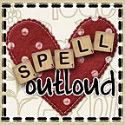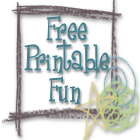Visual Perception
The vision skills we need to understand, analyze, and interpret what we see are called visual perception.
Children who have difficulties in this area may have:
- a poor sense of direction
- difficulties with organisational skills
- reverse words in both reading and spelling (eg. saw for was)
- difficulty understanding abstract maths concepts, paticularly in the areas of shape, space and measure
- problems with comparative language (eg. taller than, shorter than, longer than)
- difficulty completing jigsaw puzzles
- problems with copying from the board
- problems with interpreting and organising diagrams, charts, graphs, maps and other visual methods of recording
- difficulties judging speed and distance
- difficulty with letter and number orientation
- difficulty with structuring and organising written work
- strengths in logic, verbal and non-verbal reasoning
- enjoyment in using multisensory strategies when learning
- a preference for a phonic approach to learning to read
- a preference to use audio methods of recording information.
Activities to develop visual perception skills:
- Post-a-shape – matching shapes to the correct opening.
- Feely bag – ask the pupils to describe a shape or object by feeling it without looking, then describe it again when they can see it.
- Copying 1 – a shape pattern or picture, using a magnetic board and pieces.
- What's missing? 1 – complete a 2D shape.
- What's missing? 2 – complete a picture.
- Guess what? – ask the pupils to guess the object when only part is visible. A picture of an object could be cut into four pieces and only one part given at a time until the children have guessed what it is.
- Object/picture matching – using everyday objects.
- Jigsaw puzzles – of varying degrees of difficulty to suit individual pupils.
- Matching shape to silhouette – using the correct orientation.
- Matching picture to silhouette – using the correct orientation.
- Draw a person – ask the pupils to copy the features of a real person, then compare.
- Copying 2 – 2D shape patterns and pictures of varying degrees of difficulty.
- Colouring 1 – symmetrical patterns of varying degrees of difficulty to suit individual pupils.
- Colouring 2 – symmetrical pictures of varying derees of difficulty to suit individual pupils.
- Tessellation 1 – arranging magnetic 2D shapes on a board.
- Tessellation 2 – drawing around 2D shapes.
- Sensory maze activities – using a variety of materials.
- PE activities – involving directional and positional language. Use symbols as a reminder.
- Multi-link pattern cards – and similar activities.
- Instructions – follow auditory instructions while using a diagram or picture, to show how to build a model.
- Noughts and crosses – using plastic or wooden pieces.
- Computer-aided picture and design activities.
- Brain gym – some activities help to develop perceptual skills.
From A-Z of Special Needs for Every Teacher by Jacquie Buttriss and Ann Callander
I wanted to share an article written by a Pediatric OT that explains Visual Perception really well and has excellent ideas on how to help your child...I really recommend this read on her blog RIGHT HERE
To improve convergence and the ability to do close work:1. Give the child a drinking straw in one hand and a strand of uncooked spaghetti in the other. Tell the child to look straight ahead as he brings his hands up in front of his face and slowly slides the spaghetti into the straw. Repeat ten times. Do this once or twice a day.
2. Provide the child with whistles and bubble toys that have moving parts when blown. They encourage the child to pull the eyes in together to watch. {If you can even find breath powered bubble toys anymore. Except for old fashioned bubble wands, these seem to have disappeared off the face of the earth and have been replaced by battery operated versions.}
3. Give the child a lollypop to suck on while doing close work. The vacuum created while sucking will pull the eyes in together. Give the child all of his drinks through a straw, and provide opportunities for resistive sucking, such as smoothies, juice boxes or drinkable yogurt.
4. Provide craft projects that challenge and motivate the child. Find lots of fun ideas here and here.
5. Play marbles, jacks, and other eye hand skill games.
To improve pursuit fixation, or the ability of the eyes to track and maintain attention on stable and moving objects:
1. Have the child race a car on a lazy eight {sideways} speedway track on a chalk board or on the floor.
2. Play balloon tennis, either with rackets or hands.
3. Have the child jump on a bosu or mini trampoline while catching small beanbags and tossing them at targets around the room.
4. Play "I spy" or other visual games, like finding as many out of state license plates as you can, etc, while traveling in the car.
5. Blow some bubbles. Have the child chase and pop them. I give them a little claw toy or a pair of zoosticks to pop them with so that they are also working on fine motor skills.
6. Dim the lights and have the child chase the beam from a laser or a flashlight. This might be a fun activity on a summer evening at twilight with other children from the neighborhood. Or give the child his own flashlight and play tag with the beams.
To improve visual memory:
1. Play concentration, where the child has to turn over cards and find matches. You can either do this with regular playing cards or buy a set. This teaches the child to develop good strategies for visual memory. If you type "memory games" into your search engine, you'll find quite a few sites that have games suitable for children.
2. Play "What's different?". Put three things on the table, have the child close his eyes, and then change one. Have the child tell you which one is different. Use more objects as he gets more skilled.
3. Place a covered tray with a dozen or so objects on a table, let the child look at it for 30 seconds, cover the tray, and have the child write down or tell you everything that he remembers. This is a fun group activity.
To improve saccadic vision {the ability of the eyes to jump and fix, the skill required for reading}
1. Lacing, beading, coloring, and cutting activities.
2. Mazes, dot to dot, and tracing activities.
3. Have the child draw and paint while standing at an easel.
4. Weaving and sewing activities.
To improve visual discrimination:
1. Play the "what's different in the picture? game.
2. Put together jigsaw puzzles, play Search a Word, and "Where's Waldo?"
3. Have the child sort things for you, like socks and silverware.
4. Nesting and stacking toys promote pattern recognition, which is critical for learning shapes of letters.
5. Play Connect Four, tic tac toe, and make a square.
For figure ground:
1. Hide objects in an indoor sandbox: fill a large container full of beans, rice, packing pellets, etc. Hide little toys for the child to find. Or move this out to the garden and hide things in the grass or among the plants.
2. When reading a picture book together, play "I Spy" with the drawings. Describe something to the child and have him try to find it in the picture based on your description. Then have him find something and describe it to you for you to find.
Have the child sit on a therapy ball while reading, watching television, or doing homework. The slight postural adjustments he makes while he's sitting will help stabilize and strengthen his back and his eyes. Or have the child lie on the floor on his belly propped up on his elbows while working for brief periods. This will strengthen the neck, which will help stabilize his eyes.














No comments:
Post a Comment